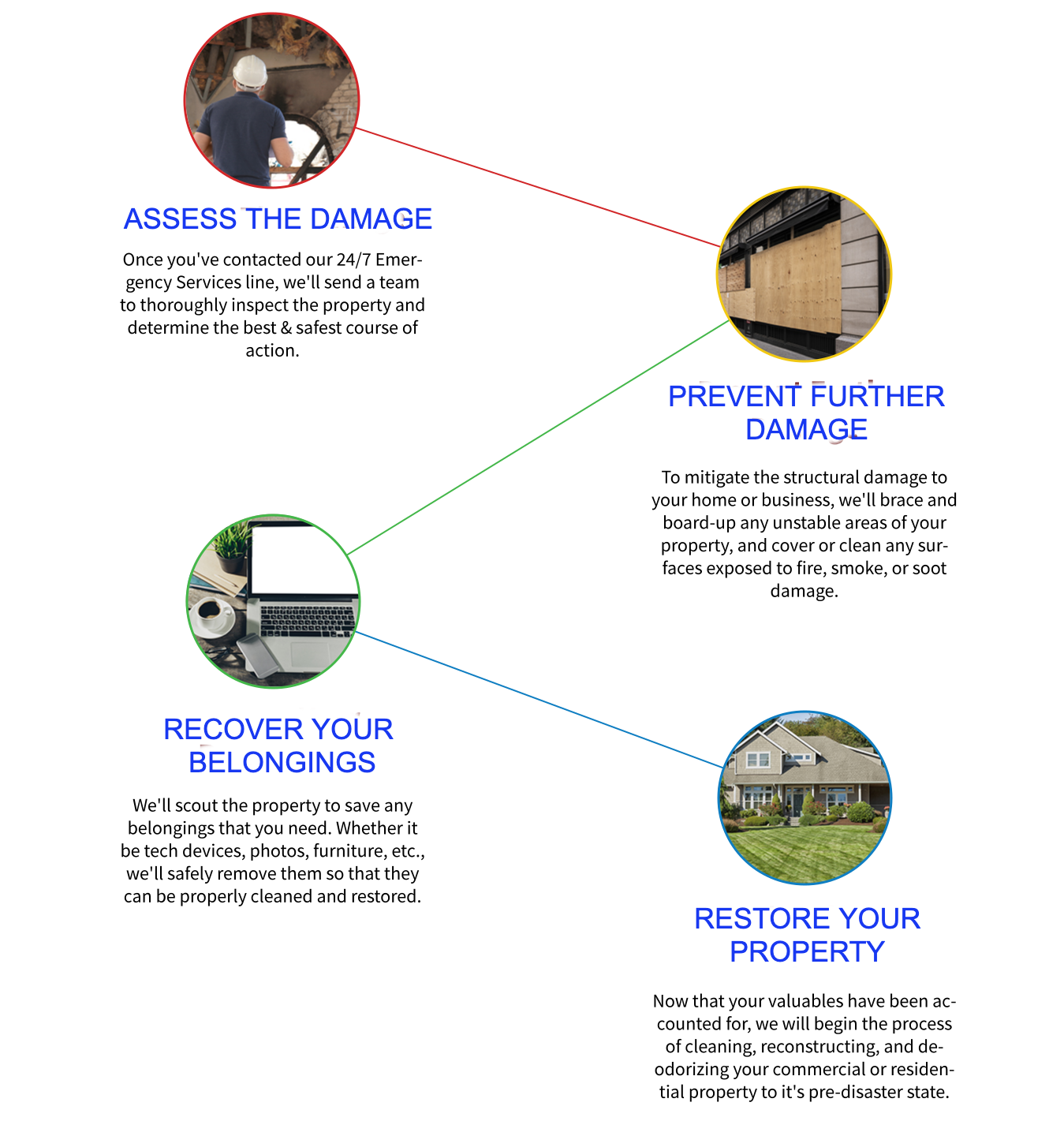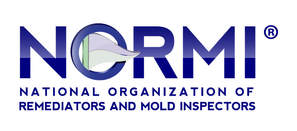Call Us To Book Your Inspection
Your home could be making you sneeze, cough or have itchy eyes. Mold in your home can even lead to asthma attacks and lung problems.
OUR MOLD REMOVAL PROCESS

Services
We also provide certified and affordable mold inspection services in Fort Myers, Naples Cape Coral and Other Surrounding Areas. While a simple mold inspection can benefit you and your family in many ways.
Our mold specialist technician will come to your home or property to inspect mold growth and it’s symptoms. After that, they will visually inspect the surrounding areas using an infrared camera. Then they will the humidity level using a humidity monitoring device. If there is any visual mold present, our technician will take samples and send it to the lab for further inspection.
Further, the technicians will photograph any possible areas of mold in the property which can be used as a legal evidence. If the remediation is not necessary based on the findings, a clearance report along with lab results will be emailed to the client.
Verifying – Mold Testing
High Tech Local Mold Testing Company In Fort Myers.
We will provide you the requisite answers on the mold growth by performing a complete comprehensive inspection of your property visually and using the latest mold testing techniques.
We take not just the samples from visible mold growth, but we also take air samples to assess the quality of air in your property. The air quality will give a better judgment on the presence of mold and the extent of its growth.
Wherever there is visible moisture on the surfaces, we take samples from those areas as well to assess mold presence inside the structure.
Fort Myers Mold Remediation – Fixing the problem
Once we have assessed on the kind of mold in your house and the amount of its impact, we then proceed on to implement the best strategy for mold remediation at your property. Our team conducts mold remediation in a phased manner where we remove the mold and ensure that the surface of growth is decontaminated completely and there is sufficient measures put in place to arrest any future growth of molds.
Removing contaminated materials from mold affected areas can be quite a delicate job and it has to be handled with extreme caution. If the mold in question is of the black mold category then disturbing the infected area could cause the mold spores to be airborne. And these are quite dangerous to the people who breathe in the infected air. Our team will ensure that proper protective measures are in place and the property is completely secured before proceeding with mold remediation.
For quality assessment on mold detection contact us today.
We at Affordable Mold Removal have Specialist that are committed and guaranteed to offer 100% mold free living after the mold removal process. (All of our jobs come with a post remediation verification (PVR) by licensed third party indoor hygienist) Our technicians are highly trained and licensed to work on mold removal in Fort Myers
Our technician will first determine the exact roots of the problem. After detecting the problem the humidity and moisture levels in the remediation area will be controlled. While proper safety would be placed to safeguard the health and concerns of the occupants. After that, the experts will disinfect the mold growth and treat it with an antimicrobial coating in order to prevent mold growth.
After completion of remediation work, all the air will be scrubbed and HEPA vacuumed to remove any ambient mold spores.
How much should mold inspection and removal cost here in Fort Myers?
That is a good question. And, it doesn’t have an easy or straightforward answer.
Every mold infestation is different and the damage it causes can vary greatly. The only way to get an accurate assessment is to have a mold inspection & cost estimate performed by one of our local professionals.
You can count on our local team to be there for you as your advocate, and to help guide you through the whole process from start to finish!
Before signing on with us, you will be advised of
- 1) The extent of your mold problem,
- 2) Which service or services will be most beneficial in your particular case, and
- 3) What the total estimated cost and turnaround time will be.
Determining the proper approach to each job is something our technicians take seriously. It can actually be a matter of your family or customers health and safety, especially if toxic mold is found in your home or business property.
(You may even need to evacuate the premises until appropriate measures have been taken!)
Is mold remediation expensive?
The average cost of mold remediation is $2,325, with most homeowners spending between $1,500–$3,150 or $15 to $31 per square foot. A small mold removal job costs an average price of $500–$1,500 while a larger job costs around $3,000–$6,000. If the moldy area is 10 square feet or less, you can handle the job yourself for about $50.
MOLD REMOVAL COST
- National Average Cost $2,325
- Minimum Cost $500
- Maximum Cost $6,000
- Average Range $1,500 to $3,150
Who pays for mold remediation?
What does a mold inspection cost?
The cost of having a mold inspection in your house depends on the following factors:
- Type of test (air sampling, surface sampling)
- Size of the area to be tested
Mold inspections can cost between $300 to $400 for small and medium-sized houses, while it can cost between $700 to $900 for larger houses.
If there is already visible mold growth, it will lower the costs unlike when inspections are done in the drywall.
In addition to a thorough assessment and professional results, you can expect the following:
The Process of Mold Remediation
The Environmental Protection Agency (EPA) notes that any moldy areas less than 10 square feet (about 3 feet by 3 feet) can be remediated by the homeowner. Beyond that, you may want to talk to a mold remediation contractor. In most cases, it is better to have a mold remediation contractor do the work than a general contractor.
Even though chlorine bleach is often used to kill mold, bleach is not an EPA-approved biocide. For that, you will need to use a product such as Mold Stat. If a space 3-foot by 3-foot of mold growth is heavily concentrated or near the HVAC system, it should be contained to prevent dispersal.
Containment and Ventilation
The first step, and arguably the most important, is setting up containment and ventilation. The use of proper ventilation and air filtration devices (AFDs) such as air scrubbers is required to ensure that mold spores that are disturbed and become airborne are not spreading to an uninfected area
Cleaning and Disinfection
Cleaning and disinfecting is the next step and this is the stage that includes the actual remediation and disposal of infected materials. After the cleaning and disinfecting, then the technicians apply biocide/fungicide/moldicide solutions.
Fix the Mold Source
The next step is where the technicians address any moisture or humidity concerns. For example, if a loose bathroom fan duct is running into an attic, the fan duct may be fixed. If the fix is easy, the mold remediation company may take on the repair by itself. For more involved repairs, the company may hire a sub-contractor or recommend one for the homeowner.
Encapsulate the Mold
Mold that has not been removed is encapsulated by paint or a similar material. Encapsulation is an approved method of dealing with mold in a home.
Why You Should Remove Mold?
Mold removal is essential to keeping a home and the people in it safe, healthy, and comfortable. Mold, mildew, rot, and dust mites can cause serious health issues, including asthma, allergies, eye and respiratory issues, and much more. Mold can also reduce a home’s property value and lead to costly structural damage. Continue reading to learn more about rot and how to control, remove, and prevent mold growth in your home.
Understanding Mold
Microscopic mold spores exist almost everywhere, outdoors and indoors, making it impossible to remove all mold from a home or business. Some restoration businesses advertise “mold removal” and even guarantee to remove all mold, which is a fallacy. Consider the following mold facts:
- Mold is present almost everywhere, indoors and outdoors.
- Mold spores are microscopic and float along in the air, and may enter your home through windows, doors, or AC/heating systems or even hitch a ride indoors on your clothing or on a pet.
- Mold spores thrive on moisture. Mold spores can quickly grow into colonies when exposed to water.
- Before mold remediation can begin, any sources of water or moisture must be addressed. Otherwise, the mold may return.
- Mold often produces a strong, musty odor and can lead you to possible mold problem areas.
- Even higher-than-normal indoor humidity can support mold growth. Keep indoor humidity below 45 percent.
Removing Black Mold in the House
It is very important to know the source of the water accumulation. Fixing it is the first step of the successful removal of black mold. If you have a high relative humidity in a room or area (55% or higher), then you should strongly consider a dehumidifier.
Minimize dust and seal off affected areas. Before cleaning and removing the mold, take necessary measures to prevent the mold from spreading. Mold spores become airborne during the cleaning process so contain the area being cleaned.
Each room should be cleaned separately. Seal the room off before beginning the cleaning process. Cleaning, as mentioned earlier, can stir up the mold so it is vital to prevent them from disseminating.
Toxic black mold removal on a dry area can be done by lightly misting the area with water before cleaning the mold. Dry mold has a much greater chance of becoming airborne when disturbed.
Remove and discard mold-infected materials by throwing them into heavy-duty plastic bags. Get the bags outside a window or other openings accessible to the room being cleaned.
Mold Removal Remediation FAQs
Is it safe to stay in a house with mold?
It is not safe. Mold growth will slowly consume building materials while dispersing tiny spores that can severely impact the health and safety of everyone on the property. This can start happening in as little as a few days. This is why a professional remediation service must be called right away to restore the property and a clean living environment for everyone.
How long does it take for mold to spread in walls?
The bad news is that mold can be found almost anywhere, and it thrives off moisture. Mold prefers an environment that has little to no air circulation, dim lighting, and an average temperature of 68 degrees Fahrenheit. Mold spores travel through the air, attach themselves to any damp surface, and then begin attacking the surface of the material they adhere to. This is one of many reasons why it is imperative for a homeowner to quickly contact a mold remediation company if they have experienced a fire or flood in their home.
Mold begins growing immediately after the spores have adhered to an item. It is not uncommon for mold to begin to grow within 24 to 48 hours, and a mold infestation can colonize within 1 to 14 days.
Will dehumidifiers remove mold
Dehumidifiers serve the purpose of reducing the level of relative humidity in the air. High humidity is a leading contributor to mold growth, since mold spores require moisture. A dehumidifier can prevent mold from activating by keeping an area dry, but if mold already has overtaken a particular room, a dehumidifier can aid in the removal process.
A dehumidifier can dry out a room by drawing the moist air inward and trapping the liquid. If a room has active mold, it also must have a presence of moisture. By eliminating the moisture, you eliminate the ability of the mold to produce nutrients, thereby rendering it dormant. Place the dehumidifier near the mold-affected area and select a high power setting. Allow the device to run until the room dries completely.
Mold removal cost
Price of mold removal depend on the size of the job — they can often be over $1000. But, some mold professionals out there exaggerate the amount of work that needs to be done, driving up the price. If you think a quoted price seems high, we recommend getting multiple quotes to compare.
However, if you get a quote that’s shockingly low, that’s also a big red flag. Companies that don’t do things properly are the only ones that can charge shockingly low prices.
Mold professionals are licensed and skilled tradesmen, just like a plumber or electrician, so you can expect to pay more for a mold company than a regular handyman. Keep in mind that mold professionals have high overhead costs, such as high general liability and workers comp insurance, which also factors into their price.
Wanna keep things really cheap? Do it yourself! In some cases, minor mold problems (less than about 10 square feet of mold) in places like a bathroom corner can easily be handled by a handy homeowner with a free weekend afternoon and a few basic supplies from the hardware store. For more information, see our previous post on the subject: Do I need a Mold Remediation Professional?
No need to take a wrecking ball to the entire house at the sight of a little mold. You can keep the price down by focusing just on the area where there is visible mold. For example, mold on drywall in one corner of the room only needs cut out and replaced in that corner. Yes, the rest of the room (and maybe adjoining rooms) should be cleaned, but only damaged drywall needs to be cut out and replaced.
What is involved with mold and mildew remediation?
Removal will always entail tidying up existing mold and mildew while staying clear of direct exposure to oneself in addition to homeowners, in addition to stopping brand-new growth by attending to the dampness resource.
Can you clean up mold and mildew on your own?
Scrub musty surfaces with mold and mildew cleaner water and 1/2 cup bleach mold cleaner to eliminate the mold. Make use of a soft brush and also work till indications of the mold vanish. After rubbing the surface areas, merely enable the bleach service to continue to permeate the surface areas and completely dry. Wipe off, however DO NOT RINSE these surface areas.
What is the ordinary price for mold and mildew removal?
Generally, specialist mold removal costs $500 to $6,000 with a lot of home owners investing in between $1,500 to $3,150 or $15 to $31 per square foot. Nevertheless, the cost can intensify to tens of thousands if the mold problem is extreme as well as left untreated for a long time.
Do I truly need mold removal?
If you smell of something mildewy in the air inside your residence, it is an excellent indication that there is a mold resource close by as well as you may require mold removal. Once again, air conditioning air ducts could be the source. Some varieties of mold do not give off odors, so mold could be present even if you do not smell anything unusual.
Professional Mold Removal
Mold can be a scary thing, but fortunately, it’s not something that is impossible to control or remove. Experts know that mold must have two things to survive and thrive: moisture and humidity. A mold removal specialist can visit your home to identify places where mold is growing or has previously grown.
Such specialists can then thoroughly seal your home so that it is fully waterproofed and protected from future mold growth. If necessary and applicable, the mold removal specialist may also wish to install a crawl space vapor barrier system to protect both your home and your health.
If you suspect mold growth in your basement or other areas of your home, contact a mold removal specialist as soon as possible. Remember: a musty-smelling home is an unsafe home. Take the necessary steps to protect your family and your property by investing in mold removal services today!
Do home sellers have to disclose mold?
In many states, laws about home selling and mold require the seller to disclose information about a past or present mold problem in the home. However, if the seller is not aware of a mold problem, and could not be reasonably expected to know, then he doesn’t have to disclose it. Basically, that means that if there is mold growing all over a wall, he has to tell you about it but he does not have to crawl into a crawlspace or look inside the walls to see if there is mold there. If he knows about mold in the crawlspace or walls, though, he must tell you about it. If the seller doesn’t tell you about a mold problem, he may be liable for any mold-related costs you end up incurring.
What are the Symptoms of mold poisoning?
Level – I Common Symptoms of Mold Exposure
The most commonly reported symptoms of short term Mold exposure:
- Sneezing
- Itching Skin
- Redness and skin irritation
- Watery Eyes
- Itching Eyes
- Headache
Level – II Advanced Symptoms of Mold Exposure
The following symptoms of Mold exposure have been reported generally as a result from persons being in a Mold contaminate environment on and off for an extended period of time. Symptoms are reported to have become more severe and longer lasting directly in proportion to the length of exposure time. Their reported symptoms are as follows:
- Constant Headaches
- Nose Bleeds
- Feelings of Constant Fatigue
- Breathing Disorders
- Coughing up Blood or Black looking Debris
- Nausea
- Diarrhea
- Vomiting
- Loss of Appetite
- Weight Loss
- Hair loss
- Skin Rashes
- Open Sores on the Skin
- Memory Loss “Short Term”
- Neurological & Nervous Disorders
- Sexual Dysfunction
- Swollen Glands in the Neck Area and under the Armpit
- Sudden Asthma Attacks or Breathing Disorders
- Ear Infections and Pain
- Chronic Sinus Infections
- Chronic Bronchitis
- Pain in the Joints and Muscles
We know mold removal can be a daunting task. Where should you begin? And how can you get it done right at a reasonable price? Well, the truth is that mold removal isn’t as complicated as it’s often made out to be. And the right mold professional can guide you through the process while charging a reasonable price.
What Are The Stages of Mold?
Stage 1 – Up to five square feet
Mold infestations of this size you can handle yourself. Just be sure to follow safe cleaning practices, such as wearing gloves and a mask or respirator, keeping people especially susceptible to the effects of mold (infants, people with suppressed immune systems, etc.) away from the area, and cleaning or discarding materials you use in the process.
Stage 2 – 5 to 30 square feet
While still a project you should be able to handle, you will want to take additional safety precautions including vacuuming the area with a HEPA filter-equipped vacuum when you complete the cleaning process. You should also be especially careful when removing mold covered materials, as the sheer quantity will make it more likely that you can contaminate other spaces as you move through the house.
Stage 3 – 30 to 100 square feet
To put this area in perspective, we’re talking about mold patches on multiple walls in a room. This begins to reach the outer limits of what is advisable to tackle on your own. Again, safety precautions are critical, as is patience and an understanding that this project will take some time to complete.
Stage 4 – 100+ square feet
An infestation of this size will likely require the assistance of a mold remediation company. At a minimum, you should consult with an expert to get an opinion on the best way to handle the problem. If you ultimately choose to take it on yourself, you should be extremely cautious. This means HEPA respirator, disposable protective clothing, sealing of ventilation ducts, etc.







